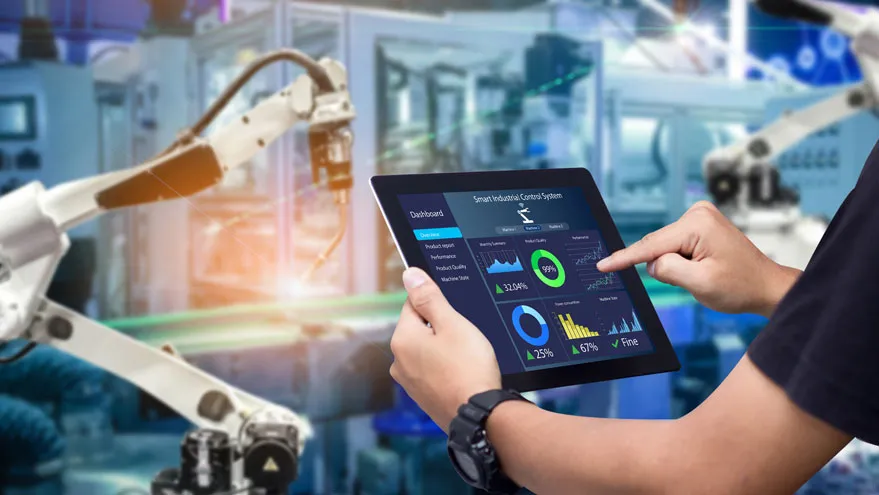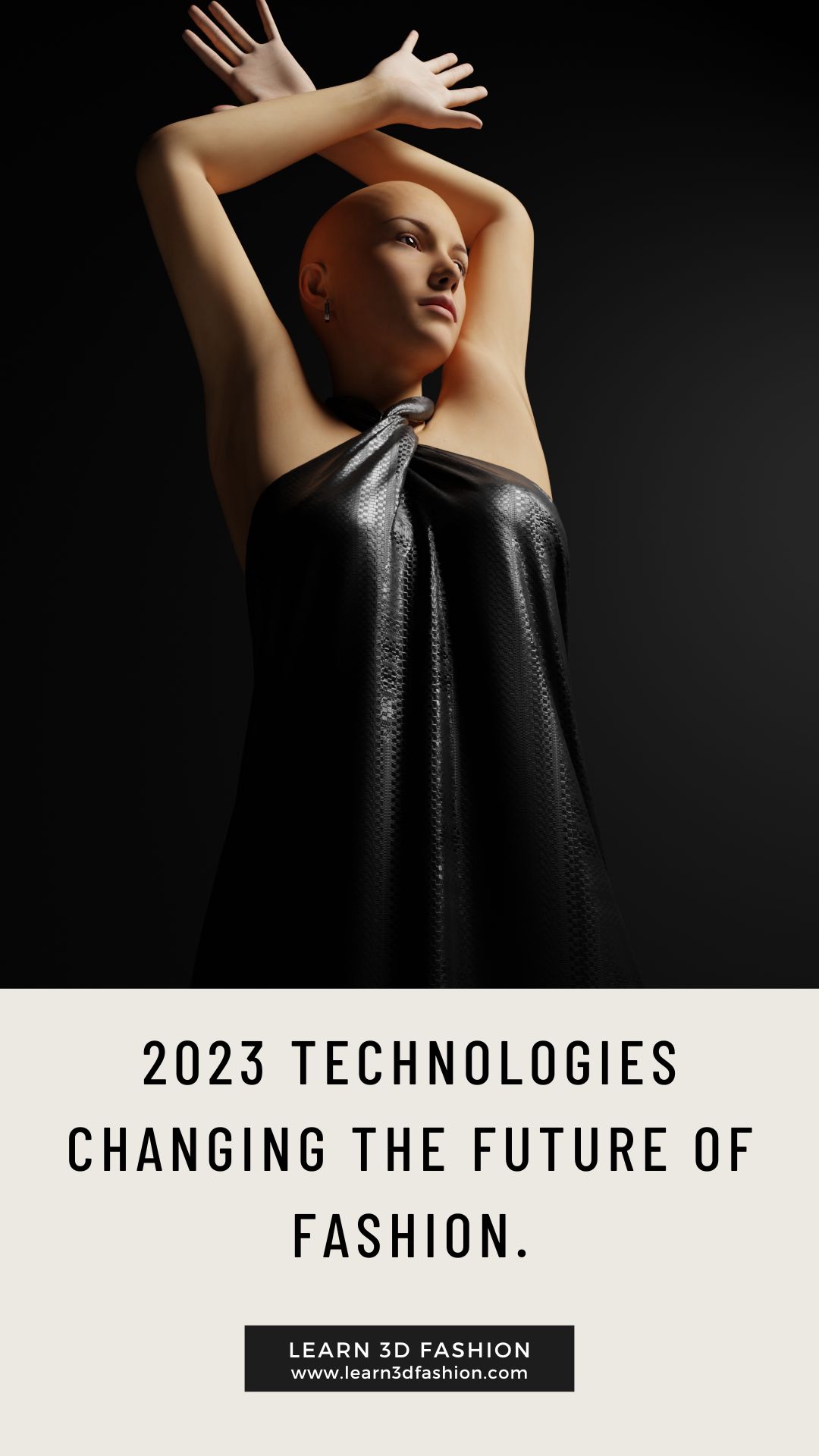2023 technologies changing the future of Fashion. The future of fashion is in a change and let's understand the major technological shifts happening in this industry.
The year 2023 will be a major technology shift for the fashion industry as several technologies are changing the future of fashion. Let’s see how in 2023 those technologies will change the future of fashion.
1. 3D printing and fashion future
This technology allows designers to create customized, one-of-a-kind clothing and accessories. It also allows for more sustainable fashion, as it reduces the need for mass production and excess inventory.
Let’s see the 10 practical use of 3D fashion in Fashion
- Customized clothing: 3D printing can be used to create customized clothing that is tailored to the individual wearer’s measurements and preferences.
- One-of-a-kind pieces: Designers can use 3D printing to create unique, one-of-a-kind pieces that are difficult or impossible to produce using traditional manufacturing methods.
- Complex geometric shapes: 3D printing can be used to create clothing and accessories with complex geometric shapes, such as dresses with intricate, organic-looking structures.
- Textures and patterns: 3D printing can be used to create clothing and accessories with a wide range of textures and patterns, from smooth and polished to rough and textured.
- Jewelry: Designers can use 3D printing to create unique, intricate pieces of jewelry, such as rings and bracelets with unusual forms and textures.
- Footwear: 3D printing can be used to create customized, one-of-a-kind shoes, including shoes with 3D-printed heels.
- Sustainable fashion: By reducing the waste in the production process and enabling the production of smaller amounts of clothing, 3D printing can make the fashion industry more sustainable.
- Mass customization: 3D printing technology has the potential to allow manufacturers and designers to offer a wide range of customization on demand to customers.
- Conceptual garments: 3D printing allows designers to explore new forms and shapes that would be impossible to produce by hand, creating a whole new avenue for the exploration of conceptual garments
- Replacement parts: 3D printing can be used to create replacement parts for clothing and accessories, such as buttons, zippers, and snaps, making it possible to extend the life of an item of clothing.
2. Augmented reality (AR) and virtual reality (VR)
One of the major breakthroughs continuing in 2023 technologies changing the future of Fashion is AR and VR.These technologies allow customers to try on clothes and accessories virtually, reducing the need for physical stores and enabling a more personalized shopping experience.
5 use cases of VR and AR in the fashion Industry
- Virtual try-on: Augmented Reality (AR) and Virtual Reality (VR) can be used to create virtual try-on experiences. This allows customers to see how a piece of clothing or an accessory would look on them before they make a purchase.
- Virtual fashion shows: VR can be used to create virtual fashion shows, allowing designers to showcase their collections in a virtual setting. This also gives viewers a fully immersive experience.
- Virtual styling: AR and VR can be used to create virtual styling experiences. This allow customers to experiment with different outfits and see how different pieces of clothing would look together before making a purchase.
- Virtual store: Virtual reality can be used to create virtual stores that mimic the real-world shopping experience, allowing customers to explore and interact with products in a more immersive way.
- Social media: AR and VR can be used to create unique and engaging social media campaigns that allow customers to interact with a brand in new ways. For example: using AR in a filter for Instagram would change the way a user looks in real-time, with a new hairstyle or make-up, or even a virtual catwalk with a live broadcast.
3. Digital 3D Technology use in Fashion industry
3D design and visualization can help fashion companies reduce costs by eliminating certain production processes and materials. 3D design and visualization enable faster prototyping and production, which can help fashion companies bring new products to market more quickly. It also allows for more efficient use of resources, as it reduces the need for physical samples and prototypes.
5 use cases of digital 3D fashion in the fashion Industry
- Garment prototyping: 3D fashion design software can be used to create detailed and accurate prototypes of garments. This allows designers to see how a piece of clothing will look and fit before it goes into production.
- Pattern making: 3D software like clo3d and browzwear software allows for precise pattern making and grading. This makes the process of creating patterns and the sampling process much more efficient, cutting down on time and materials used.
- Fabric simulation: Digital 3D software can be used to simulate the way different fabrics will drape and move, allowing designers to see how a garment will look and move in real-world conditions.
- Customization: With 3D software, it is possible to customize the fit and style of garments, making it easier for brands to offer a range of sizes and personalized options to their customers.
- Collaboration: 3D software allows multiple users to work on the same project remotely, making it easier for designers, pattern makers, and other team members to collaborate. Designers can also share ideas quicky and efficiently. This can cut down on the need for physical samples and fittings, and make it easier to work with remote team members.
4. Sustainable materials in fashion
For 2023 technologies changing the future of Fashion, sustainability becomes one of the top priorities. There is an increasing focus on using sustainable materials, such as recycled plastic and organic cotton, in fashion design. These materials are more environmentally friendly and can help reduce the fashion industry’s impact on the planet.

Let’s see some materials that are getting created to care for the earth.
- Recycled plastic: Recycled plastic is becoming an increasingly popular sustainable material in the fashion industry. It is made from recycled plastic bottles and other plastic waste, and can be used to create a wide range of clothing, bags, and other accessories.
- Organic cotton: Organic cotton is grown without the use of synthetic pesticides and fertilizers, making it a more sustainable option than conventional cotton. It can be used to create a wide range of clothing, including t-shirts, jeans, and other casual wear.
- Tencel: Tencel is a sustainable material made from the wood pulp of eucalyptus trees. It is known for its softness, drape, and moisture-wicking properties, and can be used to create a wide range of clothing, including dresses, blouses, and bedding.
- Bamboo: Bamboo is a fast-growing, renewable resource that can be used to create a wide range of clothing and accessories. It is known for its softness, strength, and antibacterial properties, and is a popular material for creating sustainable fashion.
- Piñatex: Piñatex is a sustainable material made from pineapple leaf fibers. It is a versatile, strong and durable, with a unique texture and natural look, making it suitable for various applications such as bags, shoes, or even garments. It has a low environmental impact, it is also a by-product of the pineapple harvest and does not require additional land, water, pesticides or fertilizers.
- Mycelium cultivation: This involves growing the root-like structures of mushrooms (known as mycelium) in a controlled environment. Mycelium can be cultivated on a variety of materials, including agricultural waste, and it can be shaped and molded into different forms. When the mycelium has grown to the desired shape and thickness, it can be dried and used as a leather-like material for fashion accessories, such as bags and shoes.
5. Artificial intelligence (AI) and machine learning in fashion industry
These technologies are being used in fashion to personalize the shopping experience, predict trends, and optimize supply chain management.

There are several ways in which artificial intelligence (AI) is being used in the fashion industry. Some of the most notable applications include:
- Personalization: AI-powered technology can be used to create personalized shopping experiences for customers, making recommendations based on their preferences, purchase history, and browsing behavior.
- Trend forecasting: AI algorithms can be trained on historical data to identify patterns and predict future fashion trends. This can help designers and buyers make more informed decisions about what to create and stock.
- Image recognition: AI-powered image recognition technology can be used to analyze images of clothing and accessories and automatically categorize them by style, color, and other attributes.
- Supply Chain: AI can be used in the supply chain management, such as predicting and analyzing consumer trends, optimising production and inventory management, and automating logistics operations.
- Manufacturing: AI-powered robots and automation can be used to improve the efficiency of manufacturing processes, such as cutting, sewing, and printing.
- Quality control: AI-powered cameras, sensors, and other technologies can be used to perform quality control checks on garments and ensure that they meet industry standards.
- Virtual styling: AI-powered virtual styling tools can be used to create virtual outfits for customers, allowing them to experiment with different looks and see how different garments would look together before making a purchase.
6. Blockchain & fashion
This technology is being used to track the origin of materials used in fashion products. This allows for more transparency in the supply chain and enables consumers to make more informed purchasing decisions.
Blockchain technology has the potential to be used in a number of ways in the fashion industry, such as:
- Supply Chain Transparency: Blockchain can be used to create a tamper-proof, decentralized digital ledger that can be used to track the movement of goods throughout the supply chain. This allows companies to have a clear record of who made a product and where it came from, and can help combat issues such as counterfeit goods.
- Payment and Transactions: Blockchain-based cryptocurrencies can be used for fast and secure transactions, streamlining payment and reducing the need for intermediaries.
- Smart Contracts: Smart contracts are self-executing contracts with the terms of the agreement written directly into lines of code. It can help to improve the speed and efficiency of business transactions, such as licensing and royalties, as well as help to reduce disputes and fraud.
- Protecting Intellectual Property: Blockchain technology can be used to create unique digital fingerprints for each product, making it easier to identify and protect intellectual property rights.
- Creating Direct Connections: Blockchain allows consumers to have more direct connections with the creators and companies, through a transparent, traceable, and decentralized system. This allows brands to more effectively reach, engage and learn from their consumers, and provide more value and trust to their brand.
- Authenticity and Traceability: Blockchain can be used to create a record of authenticity and traceability, that makes it easy to identify if a product is real or fake, with a permanent and unchangeable record of the product’s origin and life-cycle information.
Conclusion
Every industry is getting disrupted by upcoming technology shifts. The fashion industry is no exception, with technological shifts like 3D printing, digital fashion, AI models, and blockchain-based technology that will contribute to becoming the fashion industry’s sustainability and efficiency. As fashion professionals and students embracing these technologies are crucial and contributing in making the fashion industry more sustainable and efficient is must.
